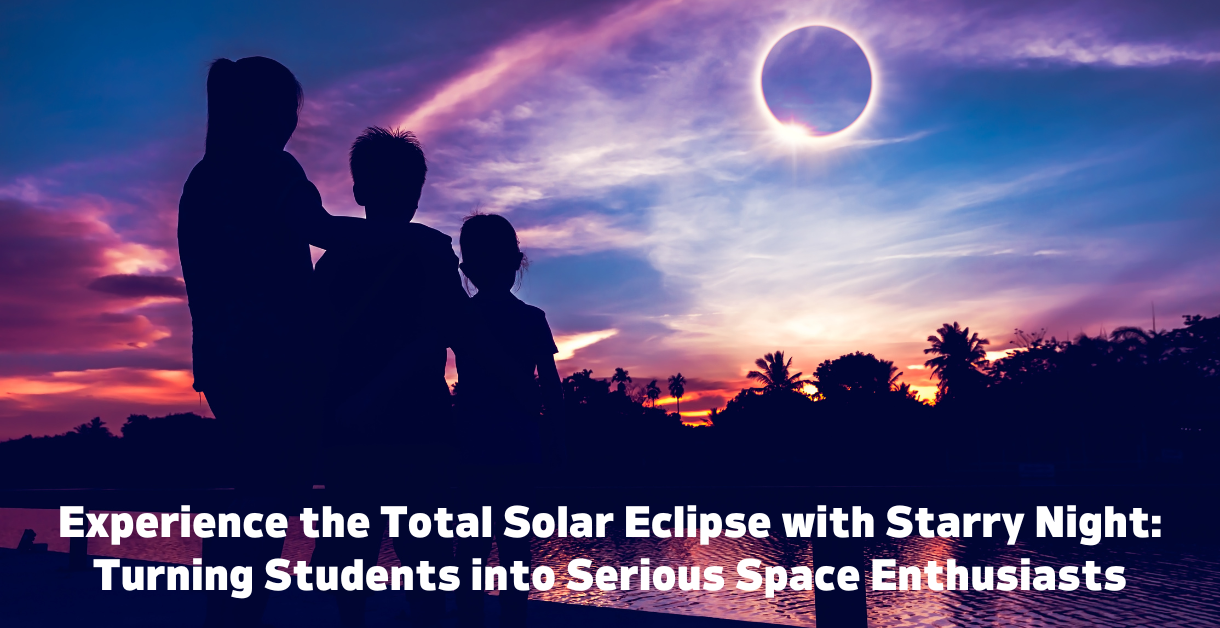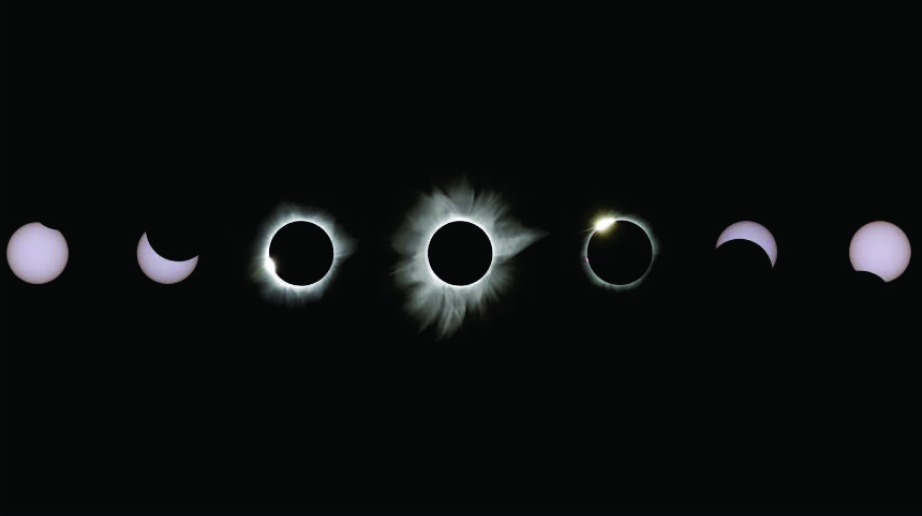
Capturing the fascination of young students with the wonders of the cosmos can be as simple as pointing them to the sky and letting their curiosity soar. Whether it's through a telescope, binoculars, or the powerful lens of educational software like Starry Night, the universe becomes a classroom full of mysteries waiting to be explored. One upcoming celestial event that presents a unique opportunity for learning is the Total Solar Eclipse on April 8, 2024.
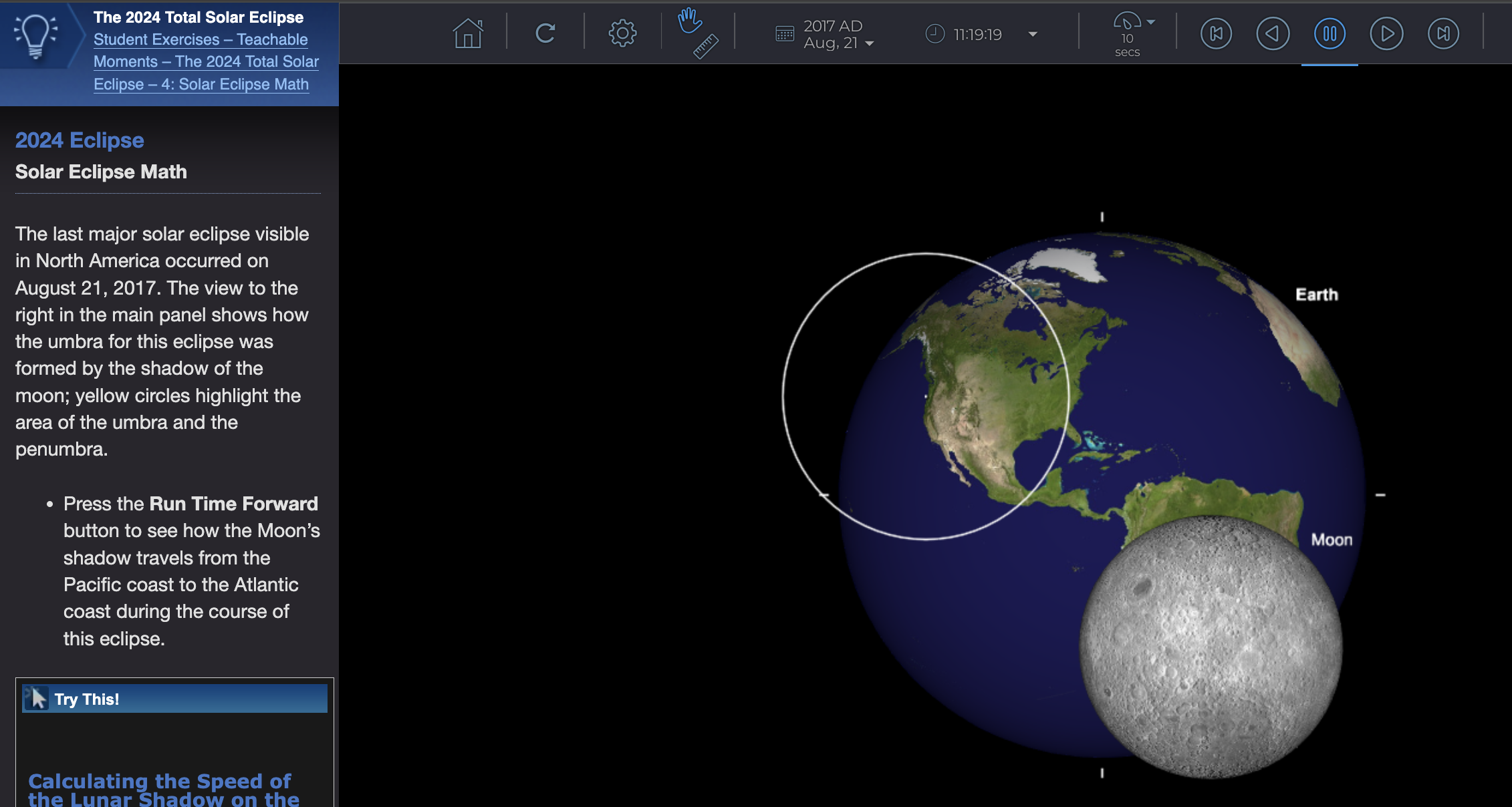
The last major solar eclipse visible in North America occurred on August 21, 2017. The view above shows how the umbra for this eclipse was formed by the shadow of the moon.
Total Solar Eclipses are rare cosmic phenomena where the Moon passes directly between the Earth and the Sun, casting a shadow on the Earth's surface. This creates a breathtaking spectacle as the Sun's bright disk is completely obscured, revealing the Sun's outer atmosphere, known as the corona. The path of totality for the April 8, 2024 eclipse will sweep across North America, from Mexico to the eastern United States and up into Canada.
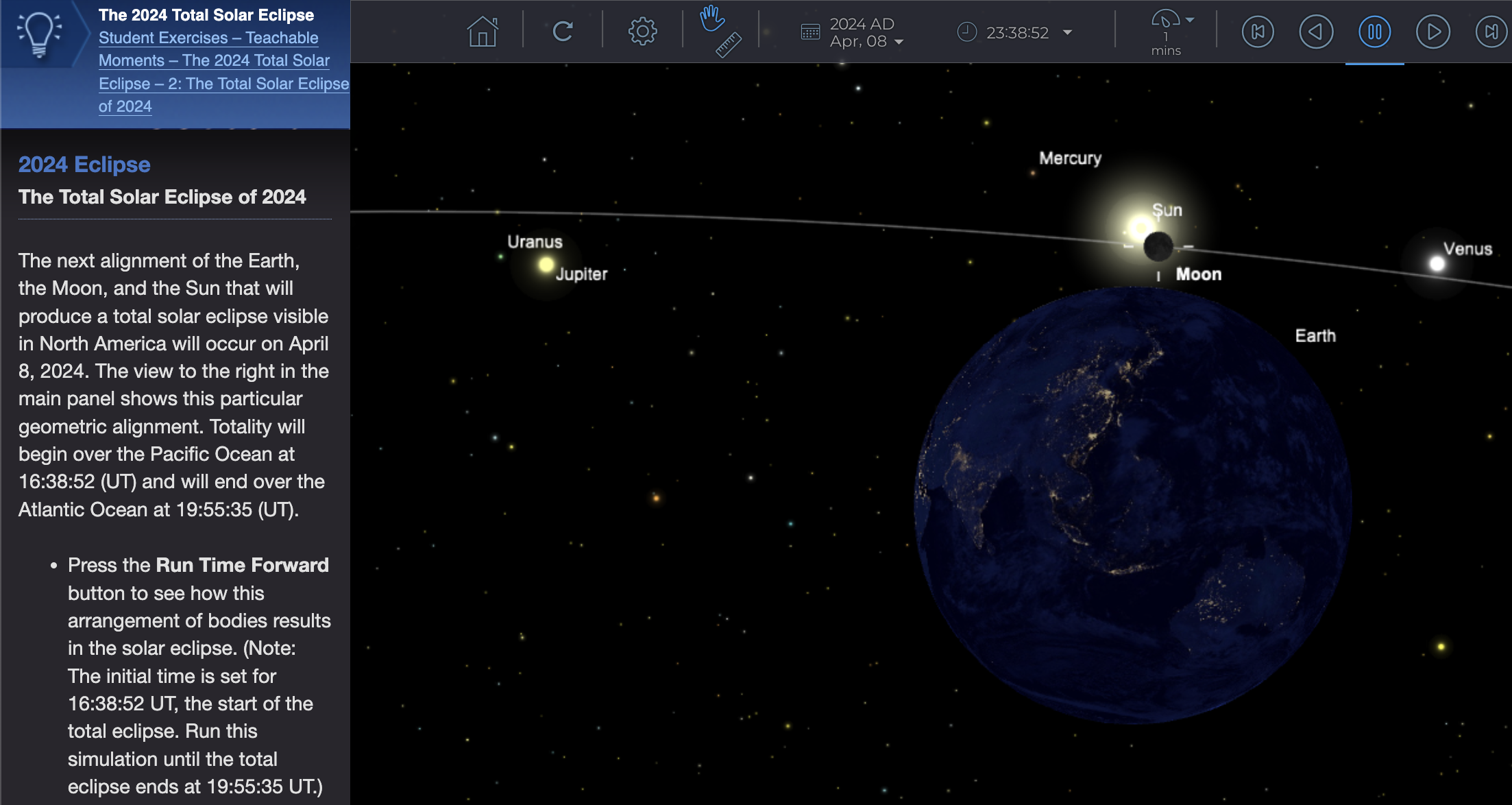
The next alignment of the Earth, the Moon, and the Sun that will produce a total solar eclipse visible in North America will occur on April 8, 2024. The view above shows this particular geometric alignment.
For educators and students eager to delve into this astronomical event, Starry Night provides an invaluable platform for preparation and observation. Just as Galileo Galilei made his own observations centuries ago, students today can use Starry Night to simulate and understand this cosmic alignment.
Using Starry Night's intuitive interface, teachers and students can input their location and view a simulation of how the eclipse will unfold in their area. By setting the date and time to April 8, 2024, they can witness the path of totality, the precise moment when the Moon completely covers the Sun, and the duration of the eclipse at their specific location. This simulation allows students to visualize the event beforehand, enhancing their understanding and excitement.
To further engage students, teachers can incorporate Starry Night's educational features into their curriculum. For instance, students can explore the phases of the Moon leading up to the eclipse, understand the geometry of eclipses, and learn about the safety precautions necessary for observing such an event. Starry Night offers detailed information on the phases of the Moon, the positions of the Sun and the Moon, and the mechanics of eclipses, making it a comprehensive tool for astronomy education.
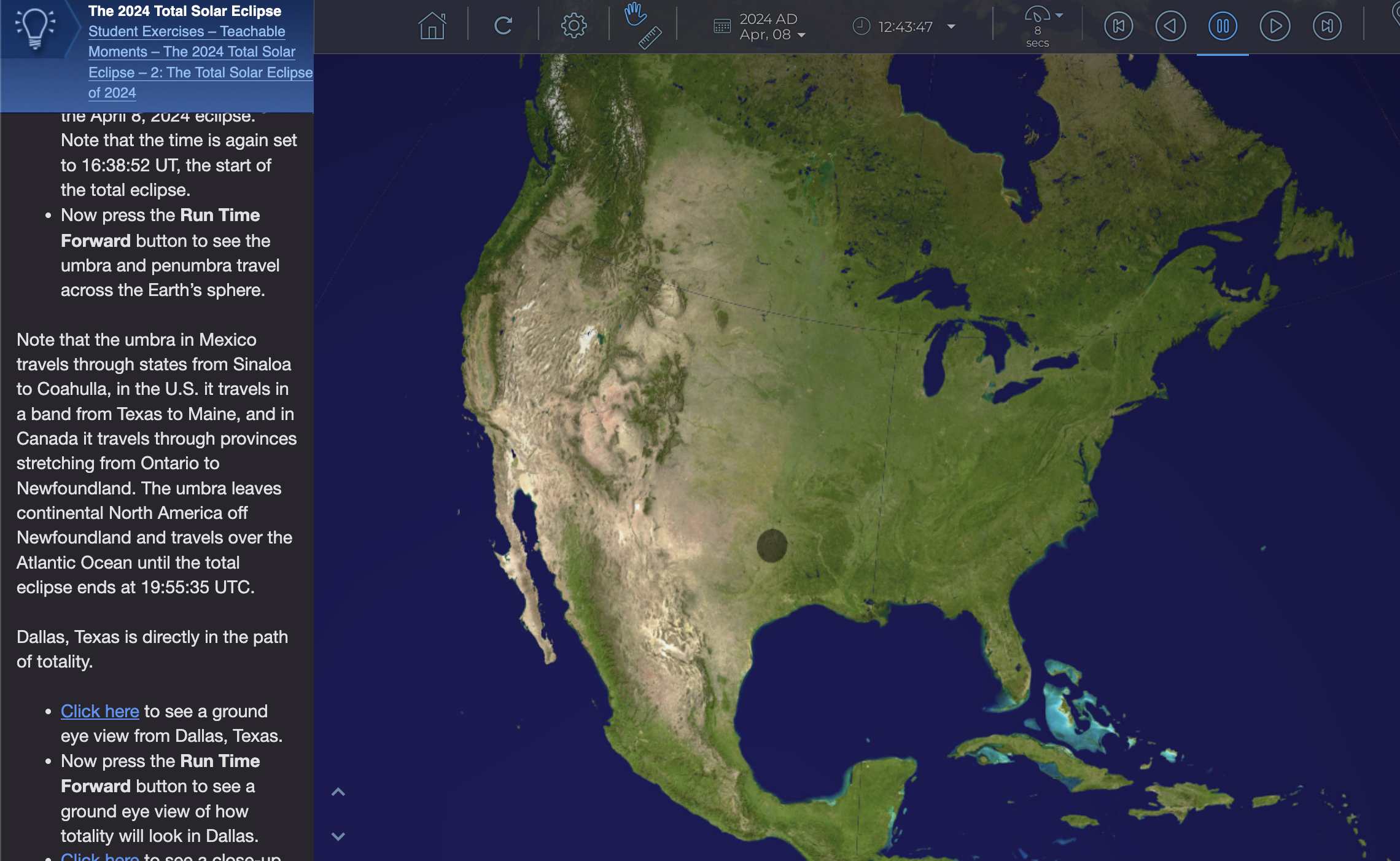
The umbra in Mexico travels through states from Sinaloa to Coahulla, in the U.S. it travels in a band from Texas to Maine, and in Canada it travels through provinces stretching from Ontario to Newfoundland.
In addition to the Total Solar Eclipse itself, educators can use Starry Night to plan pre-eclipse and post-eclipse activities. Before the event, students can track the Moon's position as it moves closer to its alignment with the Sun. During the eclipse, they can observe and record changes in the sky, such as the darkening of the landscape and the appearance of stars and planets. Afterward, they can compare their observations with the simulation in Starry Night to deepen their understanding of celestial mechanics.
Starry Night also enables students to explore related phenomena, such as lunar eclipses and the motions of celestial objects. By creating sky charts and diagrams, students can visualize the paths of the Sun, Moon, and Earth, gaining insights into the patterns that govern our solar system.
As we approach April 8, 2024, educators have an exciting opportunity to inspire the next generation of astronomers. By integrating Starry Night into their lessons, they can transform their classrooms into observatories, fostering curiosity and discovery among their students. Whether they're witnessing the magic of a Total Solar Eclipse or exploring the mysteries of the night sky, students equipped with Starry Night are on the path to becoming junior astronomers, ready to keep looking up and exploring the cosmos.
So mark your calendars, set your locations, and get ready to experience the awe-inspiring Total Solar Eclipse of April 8, 2024, with Starry Night as your guide. Let the wonder of the universe spark the curiosity and imagination of your students as they embark on a cosmic journey from the comfort of their classroom.
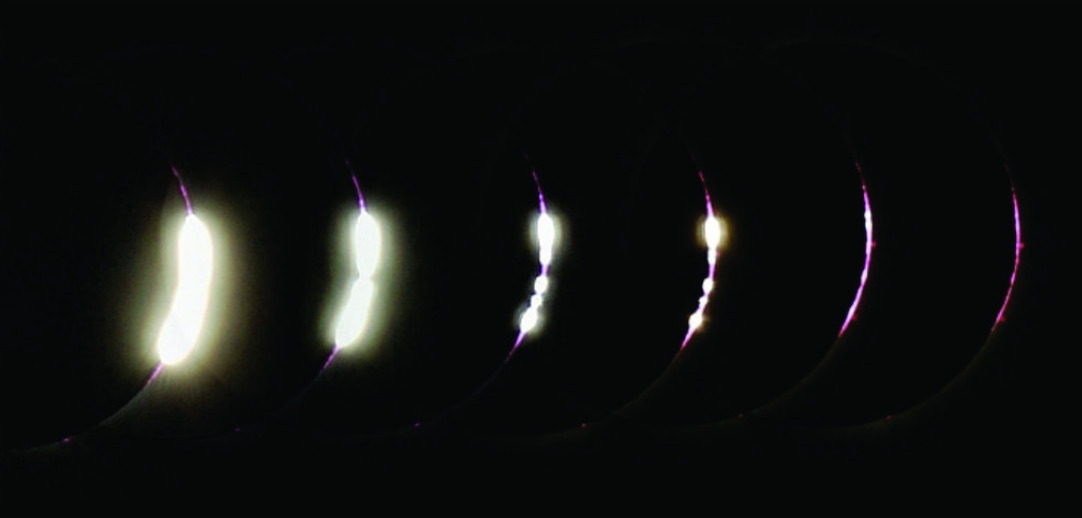
A view of Bailey’s beads from the total solar eclipse over Indonesia.
Thank you to our friends at Simulation Curriculum for sharing their expertise with us.
![]() Simulation Curriculum develops and publishes best-in-class simulation software and curriculum for K-12 and college markets world-wide. Starry Night and its earth science counterpart, Layered Earth, empower educators with user-friendly, comprehensive tools, fostering engagement and learning across all levels.
Simulation Curriculum develops and publishes best-in-class simulation software and curriculum for K-12 and college markets world-wide. Starry Night and its earth science counterpart, Layered Earth, empower educators with user-friendly, comprehensive tools, fostering engagement and learning across all levels.
Get your kids excited about the upcoming eclipse and start their journey among the stars with a Starry Night Education and save even more at the Club.

